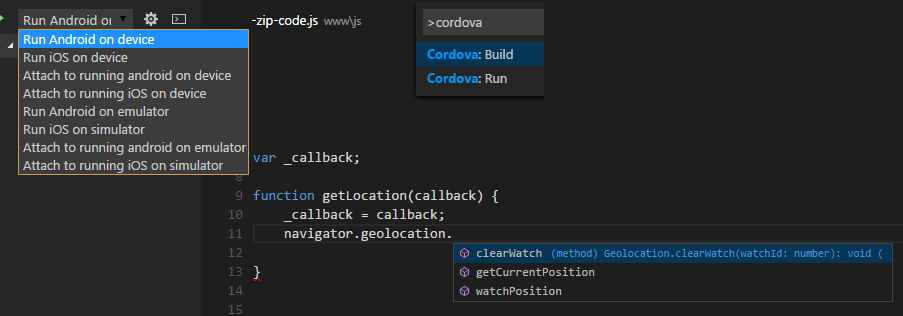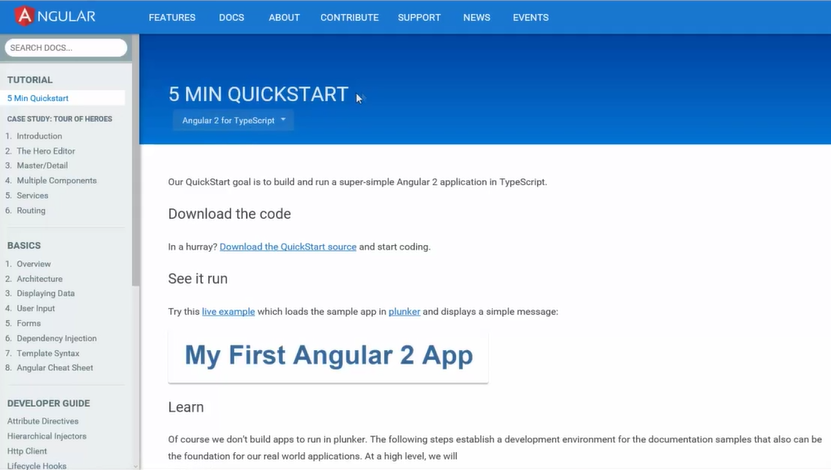Top New from March 2016
Yes, it might seem a bit odd to have a post with “March” in the title now that it’s already May, but it does take a few weeks for the data to show what you’ve all been reading about lately. So with no further ado, here are those recent highlights!
Xamarin included with Visual Studio. As announced at //build 2016 to great applause, Xamarin’s full cross-platform, C#/.NET-based mobile app platform is now included at no extra cost in all editions of Visual Studio. No more licensing! Clearly this has made a difference. Nat Friedman noted during his keynote at Evolve 2016 last week that interest in Xamarin has spiked an impressive 3x in the last month. And perhaps the reason is simple: as Mickey Gousset writes in Two Reasons Microsoft acquiring Xamarin is important to you, .NET has always had the potential to deliver truly universal apps. The combination of Xamarin, Visual Studio, Visual Studio Team Services, and Azure, to which I’ll also add HockeyApp, bring us very close to fulfilling that promise.
Special note: for more from Xamarin Evolve 2016, see these posts:
- Previews and Updates in Xamarin Studio, Xamarin for Visual Studio, and Workbooks
- Faster and Easier Mobile App Development with Xamarin.Forms
- The New, Mobile-Optimized Development Lifecycle
- News from Xamarin Evolve: What’s next for Visual Studio and Xamarin
Tooling for Apache Cordova. Of course, Xamarin isn’t alone in this quest, and there are many web developers looking to leverage their skills on mobile through Apache Cordova. Microsoft’s ongoing support for these developers through Cordova tooling is demonstrated through a continuous stream of updates: Tools for Apache Cordova Update 7 (March 9), Update 8 (April 4), and Update 9 (May 3). All of these contain features and improvements that you’ve told us are important to you. One such priority is simplifying Cordova development on Macs through the Cordova Tools extension for Visual Studio Code, and many developers have found Sergiy Baydachnyy’s walkthrough, Cordova Tools for Visual Studio Code, very helpful for configuring and using the extension
More Extensions for Visual Studio and Visual Studio Code: Extensibility is easily one of the most important features for development tools in the Visual Studio family. It allows all of you to create and share exceptional time-saving tools with the rest of the community. First, if you haven’t been following Michael Dick’s series on new and notable extensions, now is a great time to review his posts for March 2016 and April 2016. On the Visual Studio Code side, Jeff Young shares the release of the Visual Studio Team Services extension, and for all of you who are authoring extensions, Ed Price shares what he calls a “palpable plethora” of goodies in 14 Extension Authoring Improvements. We expect that you’ll be keeping Michael Dick quite busy with reviewing your creations!
Open Source Momentum: In a very recent interview with Business Insider, Xamarin co-founder Miguel de Icaza commented on how fundamentally Microsoft has shifted to embracing open source, and it continues to show. As promised at //build and fulfilled at Evolve, Xamarin itself is now open-source. Shanku Niyogi, the General Manager of Visual Studio, also announced that Microsoft joined the Eclipse Foundation to bring more tools to the community, including open-sourcing the free Team Explorer Everywhere plugin for Eclipse. And to top it off, Justin Clareburt and Michael Dick also announced Open Sourcing the Visual Studio Productivity Power Tools, a set of powerful extensions that also serve as excellent examples from which you can build more extensions of your own.
R Tools for Visual Studio. On the Big Data front, the most popular statistical/data analysis language in use today, R, finds itself fully at home in Visual Studio. In his post, Announcing R Tools for Visual Studio, Shahrokh Mortazavi gives you a feature run-down of these tools, which are (no surprise), also open-source. John Lam, in Introducing R Tools for Visual Studio, also provides you with a video introduction along with a quick tour of the R language itself. And in a surprise move, John reveals that he actually wrote this post directly in Visual Studio using his own RMarkdown extension, a dialect of Markdown “which supports embedding executable R code snippets within it.” Check it out!
For the Web: As you probably know, Angular.js has been a very popular client-side library among web developers and those working on Apache Cordova apps. In his Web.Dev 2 video: Getting Started with Angular 2.0 (24m 44s), Jeremy Foster gives you a detailed walkthrough so you can understand all the bits that are going on. Similarly, Kingcean takes a detailed look at JavaScript Promises in EcmaScript 6. And if you’re game for diving into another even more specific area, take a look at the current state of dependency inversion in JavaScript by Wolk Software Engineering, as apparently many developers have been. On the other hand, you might be investing more time in building ASP.NET AJAX applications, in which case you’ll want to read about v16.1 of the ASP.NET AJAX Control Toolkit.
Pull Requests and App Design: To wrap up this list of the popular posts, here are two more that have, as you can guess from the heading, absolutely nothing to do with one another! First is Matthew Mitrik’s post, Squash: A Whole New Way to Merge Pull Requests, in which he describes a Visual Studio Team Services merge option for Git, squash merge. Squashingproduces a merge commit with only one parent and thus greatly simplifying target branch history. Second is Getting started with app design by the Windows Apps Teams, which helps many of us non-designers step into this fascinating world. To this I would add a personal recommendation for the book, The Non-designers Design Book by Robin Williams (a designer, not the late comedian). Although this title is geared toward graphic design, I found it nonetheless very insightful for developing a more designer-like awareness of what’s happening visually within an app.
 |
Kraig Brockschmidt, Senior Content Developer, Visual Studio
@kraigbro
Kraig has been around Microsoft since 1988, working in roles that always have to do with helping developers write great software. Currently he’s focused on developing content for cross-platform mobile app development with both Xamarin and Cordova. He writes for MSDN Magazine, is the author of Programming Windows Store Apps with HTML, CSS and JavaScript (two editions) and Inside OLE (two editions, if you remember those) from Microsoft Press, occasionally blogs on kraigbrockschmidt.com, and can be found lurking around a variety of developer conferences. |





 Light
Light Dark
Dark
0 comments